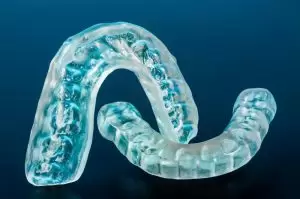 A recent TechCrunch article announced some big technology news: Smile Direct, one of the newest orthodontics-by-mail companies to hit the marketplace, will be investing in 49 state-of-the-art 3D printers to print up to 50,000 orthodontic molds per day in their warehouse. But while this is great news for the 3D printer manufacturers, and arguably for Smile Direct, it may not be such a good idea for your teeth.
A recent TechCrunch article announced some big technology news: Smile Direct, one of the newest orthodontics-by-mail companies to hit the marketplace, will be investing in 49 state-of-the-art 3D printers to print up to 50,000 orthodontic molds per day in their warehouse. But while this is great news for the 3D printer manufacturers, and arguably for Smile Direct, it may not be such a good idea for your teeth.
Ever since 2014 when Smile Direct entered the orthodontic marketplace, people have been flocking to the company to save money on orthodontic work. It works like this: You see an individual for a mouth scan. This person may or may not be a dental technician. They take 3D photos of your mouth and send them off to a lab. A few weeks later you have molds in your hand. You wear them for a predetermined amount of time and then make an impression at home, sending that back to the lab. New aligners are mailed to you.
Seems easy enough, right? But not everyone agrees with the business model. Namely, dentists and orthodontists.
“The problem is, you are relying on untrained consumers to take accurate molds of their own mouth, then hoping that mold makes it safely to a lab, and then sending the aligners back and hoping they fit,” says Dr. Allison Lesko, a dentist in Fort Collins, Colorado. “And that’s just what could go wrong immediately.”
Lesko says the other issue with this type of treatment is that over time as the teeth shift, more problems could arise that, without input from a trained dentist or orthodontist, could cause big problems for the patient.
“If the teeth move in the wrong direction or a cross bite develops, for example, it can be hard to correct that if without a dentist or orthodontist there to point it out,” Lesko says.
Worse still, finding a dentist or orthodontist to correct the damage from at-home aligners could cost more money than just going to one for treatment in the first place – not to mention how much time it will take to correct any damage caused by the aligners.
“It may not be a quick fix,” says Lesko. “It could take months to redirect your teeth, and it could cost you hundreds to thousands of additional dollars out of your own pocket.”
That’s because many insurance plans with orthodontic coverage have a lifetime max, so if you use it on the initial treatment, you have no coverage for subsequent follow-ups. And that can be a problem once treatment is finished, too
“What happens once your treatment is done and in two years your teeth are shifting? You’ll need to find a new orthodontist and pay him or her out of pocket, too,” Lesko says. “With by-mail aligners there’s nobody to go back to when you need help.”
Lesko says while she applauds the desire to take control of one’s oral health and save some money, cutting out the middleman isn’t always the answer.
“In this case, the middleman is the dental professional – and he or she is vital to your treatment’s success,” she says.
Contact The Fort Collins Dentist Family & Implant Dentistry:
970-221-5115
Location (Tap to open in Google Maps):
2001 S Shields St Bldg L
Fort Collins, Colorado
80526



